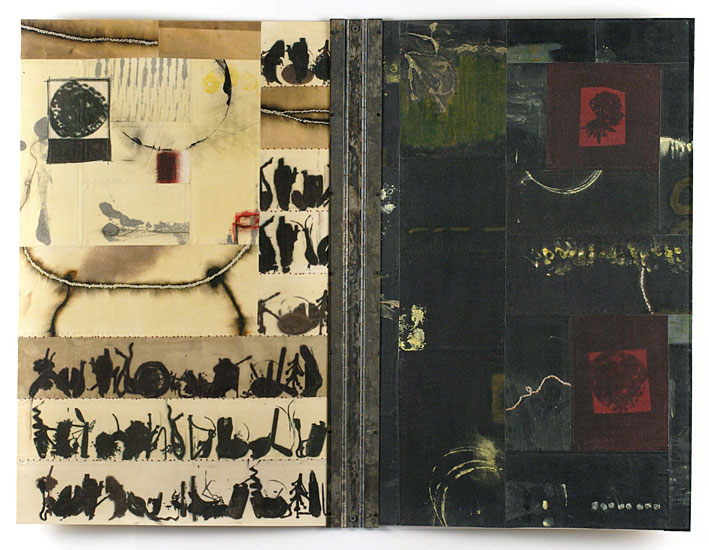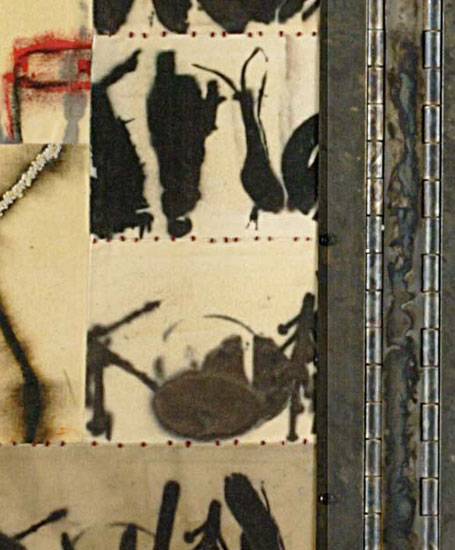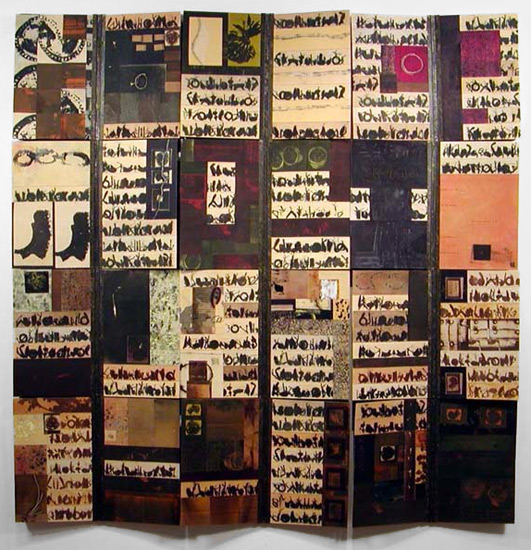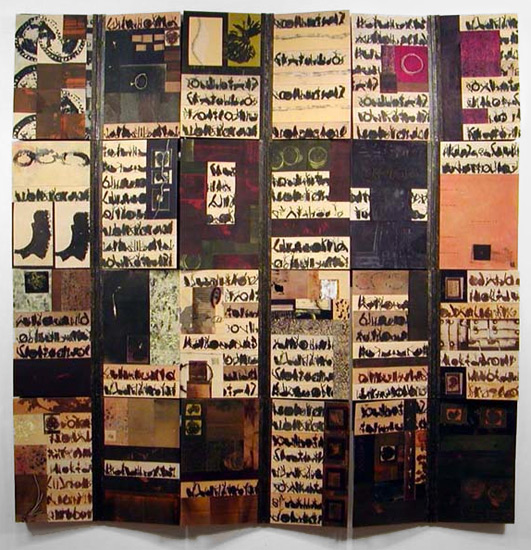About This Project
In a striking combination of materials, techniques, and historical references, the 50 sculptural book forms in Rachel Brumer’s installation Quire: Book of Findings examine the enduring relationship between art, language, and expression. Currently in the midst of her third “non-verbal career,” Brumer has long been fascinated by alternative modes of communication. Trained as a modern dancer, her early instruments were movement, rhythm, and theme and variation. Performing in Robert Wilson and Phillip Glass’s epic opera Einstein on the Beach, however, marked a pivotal moment in Brumer’s growth as an artist. Its radical departure from traditional theater, mathematical underpinnings, and mechanical movements prompted Brumer’s investigation of static imagery and new forms of articulation. Following her retirement from dance, Brumer sought a second career as a sign language interpreter, translating her previous experience to the rich pictorial language and fine motor skills employed in sign language. Turning to visual art twelve years ago, Brumer adopted the quilt format as her canvas and began developing a personal vocabulary of images.
With her recent body of work, Quire: Book of Findings, Brumer’s artistic output comes full circle. Mirroring the evolution of language itself – from the creation of the word to its graphic representation, and finally its written transcription – Brumer’s visual language has progressed from a vocabulary of images to an alphabet of characters and a synthesis of the two. In this series, words, sentences, and paragraphs are composed from images of organic and man-made materials gathered along a two-mile walk near the artist’s home. Pieced together not as a patchwork quilt, but as lines and groupings of text within a conventional book format, each assembly of images invites meditation on the capacity to write without words.
On an intimate level, the complete collection of folios represents a visual diary of the artist’s walk. As an encyclopedia of references to textiles, photography, and books throughout the history of art, Quire transcends individual, national, and temporal boundaries. Brumer’s study of early writing forms and illuminated manuscripts surfaces in multiple ways: the warp and weft of her fiber pages and the cryptic set of images covering them harken back to the ancient Egyptian practice of inscribing hieroglyphics on fused strips of papyrus; the glowing golds, browns, and blues dominating Brumer’s palette of hand-dyed fabrics recall the gold leaf and crushed lapis lazuli used to illustrate sacred medieval texts; French knots punctuating Brumer’s pages draw elements of Braille into her work; contact prints of found objects evoke Man Ray’s experimental photograms. The book form itself becomes a point of departure for acknowledging the power of the written word to inspire and enlighten as well as to incite hatred and violence. Over the centuries and across cultures, books have been treasured, revered, banned, and burned for their content. Now, deep in this technocratic information age, books are threatened in new ways. But with Brumer’s Quire, attention shifts from the Internet back to the traditional book form and the quiet, contemplative retreat it offers.






